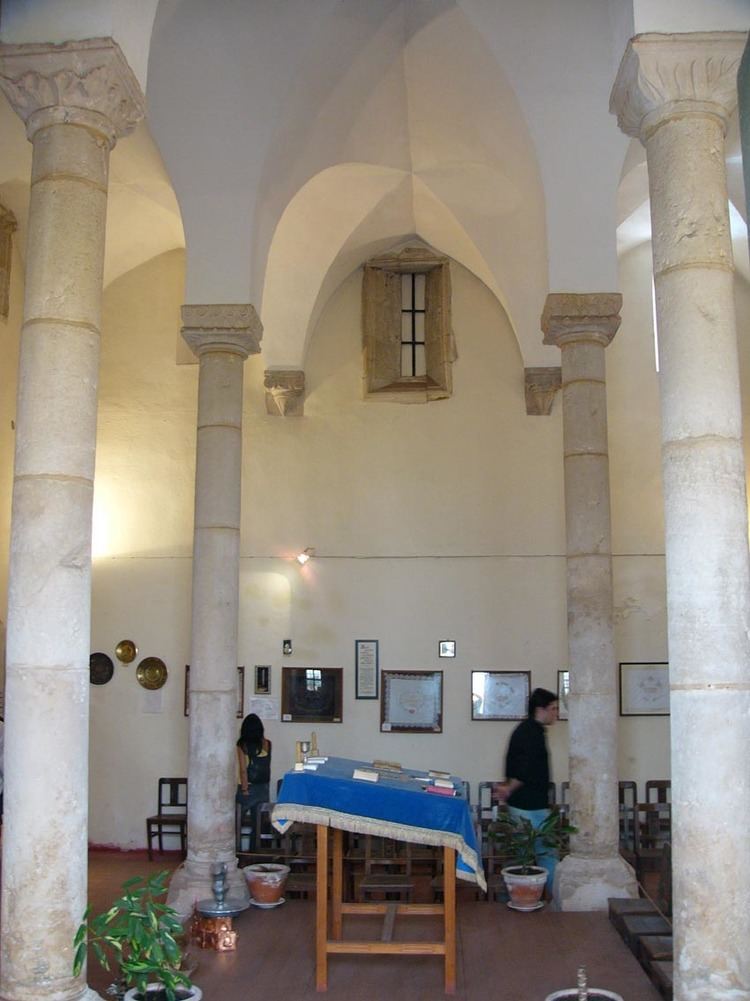Phone +351 249 329 823 | ||
 | ||
Address R. Dr. Joaquim Jacinto 73, Tomar, Portugal Hours Closed today MondayClosedTuesday10AM–12PM, 2–6PMWednesday10AM–12PM, 2–6PMThursday10AM–12PM, 2–6PMFriday10AM–12PM, 2–6PMSaturday10AM–12PM, 2–6PMSunday10AM–12PM, 2–6PMSuggest an edit Similar Museu Luso Hebraico, Museu dos Fósforos, Castelo de Tomar, Church of Santa Maria do, Igreja de São João Baptista | ||
Tomar
The Synagogue of Tomar is the best preserved of the medieval synagogues of Portugal. It is located at 73 Rua Dr. Joaquim Jaquinto, in the historic centre of the city of Tomar, and houses a small Jewish Museum.
The synagogue of Tomar was built between 1430 and 1460 by the thriving Jewish community of the town. From the outside, it does not look different from the other houses in the street. The current main entrance, facing North, did not exist in the Middle Ages. It was the gothic pointed arch facing East - the direction of Jerusalem - that used to be the main entrance to the temple. Inside, the synagogue is a square-shaped hall with three short aisles divided by four pillars supporting Gothic vaulting. The capitals bear geometric and vegetal motifs. Excavations in a building beside the synagogue revealed the remnants of a mikveh (ritual bath for women).
The synagogue was used as such for no more than half a century in the 15th century. In the next four centuries, it changed hands and purpose at least 4 times:
On 29 July 1921 the building was classified national monument. On 5 May 1923, the then owner of the building, Joaquim Cardoso Tavares, sold it to the Polish scholar Samuel Schwarz, who restored the building and conducted the first excavations. Schwarz donated the building on 27 July 1939 to the Portuguese government with the condition that it should be turned into a museum; in return Samuel Schwarz and his wife were granted Portuguese citizenship that protected them during the Second World War. Since 1939, the building functions as the small Jewish Museum Abraão Zacuto (Abraham Zacuto). It hosts several mediaeval tomb slabs from the whole country. Two of its best exhibits are a stone plate from the Lisbon synagogue, dated from 1307 and bearing a greeting inscription and a notable 13th-century inscription from Belmonte on which the Divine Name is represented by three dots in a manner reminiscent of the ancient Hebrew manuscripts from the Dead Sea.
Other well-preserved, pre-expulsion synagogues can be found in Híjar, Toledo, and Córdoba.
